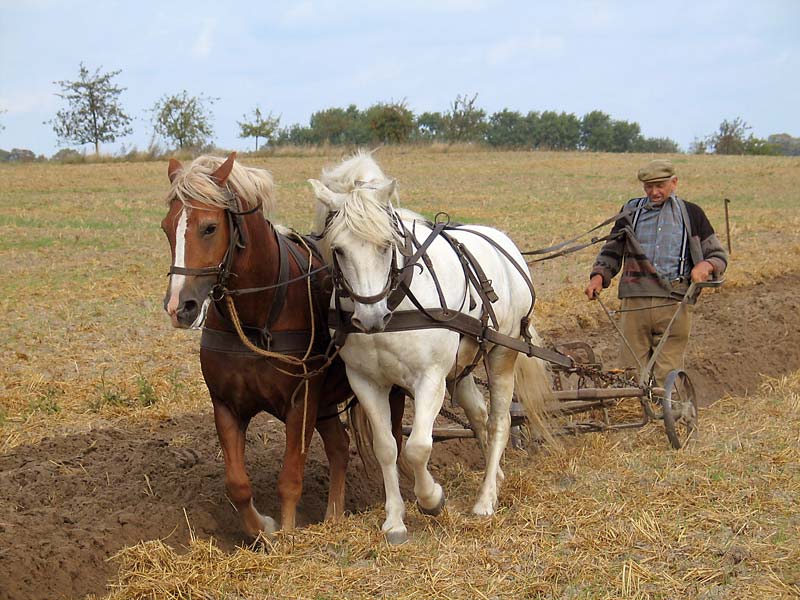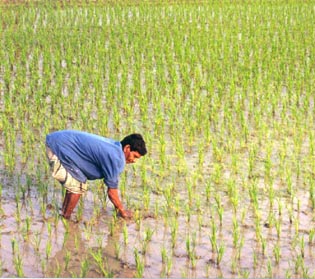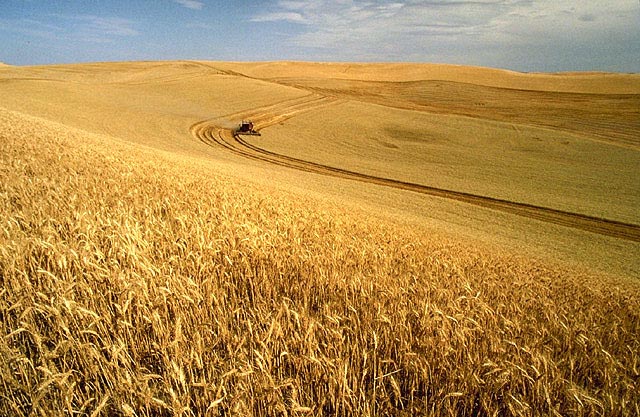I published
this post last Sunday on
Legal Ruralism, but am only now getting it up on Agricultural Law, prompted in part by Susan Schneider's
excellent post on the same topic a few days ago. Here's my post:
A trough that overflows is the image Robert Semple, Jr., conjures in
his editorial (by the same name) in [the June 3, 2012 issue of the]
New York Times. In it, Semple argues that the current version of the next generation farm bill replicates the problems long associated with the farm bill: it supports fat cat farmers while doing too little to help small-scale farmers. Semple makes references to "rural" and "small town" in the opening paragraph, but does not return to these concerns expressly later in the piece. He makes no mention of rural development funds, which have always been a proverbial drop in the farm bill/USDA bucket. [
Some sources I have since read indicate no provision has been made for rural development in the current draft of this farm bill].
What Semple focuses on is how federally subsidized crop insurance is increasingly replacing direct payments (a/k/a subsidies). The lede to Semple's editorial follows:
Every five years or so, Congress promises a new, improved farm bill that will end unnecessary subsidies to big farmers, enhance the environment and actually do something to help farmers and small towns. But what it usually does is find ways of disguising the old inequities, sending taxpayer dollars to wealthy farmers, accelerating the expansion of industrial farming, inflating land prices and further depopulating rural America.
Semple goes on to explain how the new farm bill fails to respond to environmental concerns, perhaps even aggravating them. He concludes by hitting hard on the bill's likely environmental consequences, given that the new focus on federally subsidized crop insurance does not depend on keeping some land fallow; nor does it require farmers not to drain wetlands. Semple concludes:
Enriched by high prices (at least for now), cosseted by inexpensive insurance, relieved of their environmental obligations, farmers could well be inclined to start planting from fence line to fence line. That would be a severe blow to the American landscape.
The "fence line to fence line" comment reminds me of this passage from Wendell Berry's
Jayber Crow, just one of several in which Berry contrasts two men's approaches to farming to illustrate conflicting views of "progress" and the "good life." The two men, Athey Keith and his son-in-law Troy Chatham, are residents of Berry's fictional Port William, Kentucky:
What I do know is that [Athey] used his land conservatively. In any year, by far the greatest part of his land would be under grass--for, as he would say, "The land slopes even in the bottoms, and the water runs." He was always studying his fields, thinking of ways to protect them. He was doing what a lot of farmers say they want to do: he was improving his land; he was going to leave it better than he found it. I know too that his principle was always to maintain a generous surplus between his livestock and the available feed, just as between the fertility of his land and his demands upon it. "Wherever I look," he said, "I want to see more than I need, and have more than I use." And this is a principle very different from what would be the principle of his son-in-law, often voiced in his heyday: "Never let a quarter's worth of equity stand idle. Use it or borrow against it."
Athey said, "Wherever I look, I want to see more than I need." Troy said, in effect, "Whatever I see, I want." What he asked of the land was all it had. He had hardly got his first crop in the ground when he began to say things critical of Athey and his ways. "Why, hell!" he would say, "it's hard to tell what that old place would produce if he would just plow it." Or: "Why the hell would a man plow just forty acres of a farm when he could plow all of it?" He would say these things leaning back in his chair, his ankle crossed over his knee, his foot twitching. He was speaking as a young man of the modern age coming now into his hour, held back only by the outmoded way of his elders.
Athey was not exactly, or not only, what is called a "landowner." He was the farm's farmer, but also its creature and belonging. He lived its life, and it lived his; he knew that, of the two lives, his was meant to be the smaller and shorter.
Wendell Berry (with Wes Jackson) wrote
this op-ed about the farm bill in the
New York Times several years ago.
The photo above is of a farm in
Witts Springs (
Searcy County), Arkansas, May, 2012. I offer it up as an example of place that will probably get very little benefit from the farm bill. Searcy County is a
persistent poverty county, and Witts Springs is not even a Census Designated Place. The community appears mostly reliant on an agricultural economy, principally cattle. The community sits on a ridge in the
Boston/Ozark Mountains, about 16 miles from
the county seat, and is the sort of place that would benefit from rural development funds. The U.S. Post Office at Witts Springs was until recently on the chopping block (read more
here and
here), and its K-12 school closed several years ago. I would be very surprised if any farmers in Witts Springs are receiving USDA money, in part because of the size of farms, in part because of what is produced (livestock, not crops). Another photo from Witts Springs is featured in
this post.
P.S. Here is a
story in the June 7, 2012
New York Times re the cost of the government subsidized crop insurance included in the new farm bill. It details how rising crop prices have led many farmers to plant land that is prone to flooding--and to plant from fence row to fence row, even "where the land slopes and the water runs." In North Dakota alone, the
Times reports, nearly a million acres have become cropland since 2007. South Dakota has lost nearly a half a million acres of grassland to farming. Read more of
the story at risk of depression.
Labels: animals, crop insurance, environment, farm bill, federal, rural development, the south













